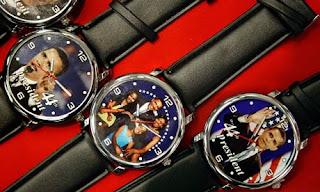By Naomi Klein
In May 2009, Absolut Vodka launched a limited edition line called "Absolut No Label". The company's global public relations manager, Kristina Hagbard, explained that "For the first time we dare to face the world completely naked. We launch a bottle with no label and no logo, to manifest the idea that no matter what's on the outside, it's the inside that really matters." A few months later, Starbucks opened its first unbranded coffee shop in Seattle, called 15th Avenue E Coffee and Tea. This "stealth Starbucks" (as the anomalous outlet immediately became known) was decorated with "one-of-a-kind" fixtures and customers were invited to bring in their own music for the stereo system as well as their own pet social causes – all to help develop what the company called "a community personality." Customers had to look hard to find the small print on the menus: "inspired by Starbucks". Tim Pfeiffer, a Starbucks senior vice-president, explained that unlike the ordinary Starbucks outlet that used to occupy the same piece of retail space, "This one is definitely a little neighbourhood coffee shop." After spending two decades blasting its logo on to 16,000 stores worldwide, Starbucks was now trying to escape its own brand.
A few months later, Starbucks opened its first unbranded coffee shop in Seattle, called 15th Avenue E Coffee and Tea. This "stealth Starbucks" (as the anomalous outlet immediately became known) was decorated with "one-of-a-kind" fixtures and customers were invited to bring in their own music for the stereo system as well as their own pet social causes – all to help develop what the company called "a community personality." Customers had to look hard to find the small print on the menus: "inspired by Starbucks". Tim Pfeiffer, a Starbucks senior vice-president, explained that unlike the ordinary Starbucks outlet that used to occupy the same piece of retail space, "This one is definitely a little neighbourhood coffee shop." After spending two decades blasting its logo on to 16,000 stores worldwide, Starbucks was now trying to escape its own brand.Clearly the techniques of branding have both thrived and adapted since I published No Logo. But in the past 10 years I have written very little about developments like these. I realised why while reading William Gibson's 2003 novel Pattern Recognition. The book's protagonist, Cayce Pollard, is allergic to brands, particularly Tommy Hilfiger and the Michelin man. So strong is this "morbid and sometimes violent reactivity to the semiotics of the marketplace" that she has the buttons on her Levi's jeans ground smooth so that there are no corporate markings. When I read those words, I immediately realised that I had a similar affliction. As a child and teenager I was almost obsessively drawn to brands. But writing No Logo required four years of total immersion in ad culture – four years of watching and rewatching Super Bowl ads, scouring Advertising Age for the latest innovations in corporate synergy, reading soul-destroying business books on how to get in touch with your personal brand values, making excursions to Niketowns, to monster malls, to branded towns.
Some of it was fun. But by the end, it was as if I had passed some kind of threshold and, like Cayce, I developed something close to a brand allergy. Brands lost most of their charm for me, which was handy because once No Logo was a bestseller, even drinking a Diet Coke in public could land me in the gossip column of my hometown newspaper.
The aversion extended even to the brand that I had accidentally created: No Logo. From studying Nike and Starbucks, I was well acquainted with the basic tenet of brand management: find your message, trademark and protect it and repeat yourself ad nauseam through as many synergised platforms as possible. I set out to break these rules whenever the opportunity arose. The offers for No Logo spin-off projects (feature film, TV series, clothing line . . .) were rejected. So were the ones from the megabrands and cutting-edge advertising agencies that wanted me to give them seminars on why they were so hated (there was a career to be made, I was learning, in being a kind of anti-corporate dominatrix, making overpaid executives feel good by telling them what bad, bad brands they were). And against all sensible advice, I stuck by the decision not to trademark the title (that means no royalties from a line of Italian No Logo food products, though they did send me some lovely olive oil).
Most important to my marketing detox program, I changed the subject. Less than a year after No Logo came out I put a personal ban on all talk of corporate branding. In interviews and public appearances I would steer discussion away from the latest innovation in viral marketing and Prada's new superstore and towards the growing resistance movement against corporate rule, the one that had captured world attention with the militant protests against the World Trade Organisation in Seattle. "But aren't you your own brand?" clever interviewers would ask me endlessly. "Probably," I would respond. "But I try to be a really crap one."
Changing the subject from branding to politics was no great sacrifice because politics was what brought me to marketing in the first place. The first articles I published as a journalist were about the limited job options available to me and my peers – the rise of short-term contracts and McJobs, as well as the ubiquitous use of sweatshop labour to produce the branded gear sold to us. As a token "youth columnist", I also covered how an increasingly voracious marketing culture was encroaching on previously protected non-corporate spaces – schools, museums, parks – while ideas that my friends and I had considered radical were absorbed almost instantly into the latest marketing campaigns for Nike, Benetton and Apple.
Read more: